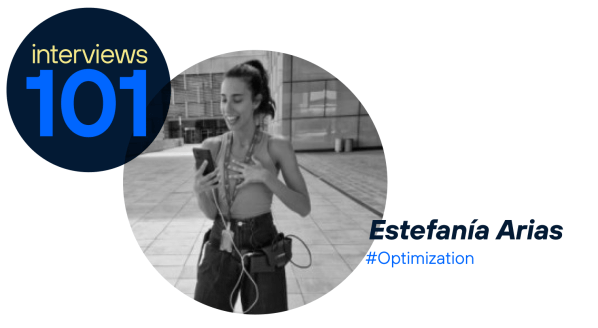Today in Málaga Telefónica and DEKRA presented a 5G cybersecurity demonstrator applied to connected mobility that can make vehicular communications more effective, reliable and secure by using 5G and cryptographic technology.
In this initiative, in which CTAG (Automotive Technology Centre of Galicia), Harman, Nexus, HPE, Telefónica Tech and Telefónica España-Digital Security have also taken part, it’s essential for the different elements of mobility, vehicles, traffic lights and tunnels to be connected to 5G network so that they can work collaboratively, exchanging information and warnings to increase road safety and, consequently, reduce accident rates. As the quality of this information becomes critical, this use case adds security certificates to the communications that ensure the authenticity and integrity of the messages that are exchanged to prevent unlawful data that could pose a risk to people’s integrity.
In this regard, the aim of this initiative is to ensure the integrity and security of these end-to-end communications by adding an integrated cybersecurity layer to Telefónica’s 5G network and the European Union’s central cybersecurity node. For example, an emergency vehicle can prioritise its journey by making all the traffic lights on its way to the hospital turn green while alerting the vehicles on the route to give way. Telefónica provides an additional guarantee to prevent any attacks on these critical communications.
To demonstrate the importance of security in these communications, three use cases have been developed in the circuit that DEKRA has set up at its facilities in Málaga. More specifically, in the first one, a vehicle that suddenly brakes warns the vehicles behind to prevent accidents and speed up the traffic. In the second, a vehicle that has stopped on the road warns of its situation with the same aim of alerting other vehicles. In the third use case it has been shown how vehicles driving on the circuit are alerted about the colour (phase) of the traffic lights on their route in order to adapt their driving. Real-time critical communications take place in all of them and these are supported by the immediacy of the 5G network response and secured by Telefónica’s digital cybersecurity certificates.
In this demonstrator Telefónica has deployed a PKI (public key infrastructure) platform for the provision of certificates to enable the electronic signing of messages in the European 5G-V2X ecosystem, thus guaranteeing the integrity and availability of the information. This PKI-V2X platform generates and sends batches of anonymous certificates to vehicles, traffic lights and other elements in the ecosystem via 5G in order to digitally sign the messages that are exchanged. The platform is recognised by the European Commission and integrated into its cybersecurity node, as a result of which a necessary step has been taken towards contributing to the creation of a secure mobility ecosystem with cross-border interoperability between the member countries.
In fact, Telefónica becomes the first telecommunications carrier to have a Certification Authority recognised by the European Commission linked to the 5G network for vehicular communications and compliant with the requirements of the C-ITS (Cooperative Intelligent Transport Systems) standard.
In addition, a solution has been deployed for this pilot that merges the identities of people with the identities of things, in this case the vehicle, offering added-value services to companies that need to have control over possession, consumption and traceability in driving, such as vehicle rental and car sharing companies. Telefónica Tech supplies an innovative identity model known as IDoT(Identity of Things), which uses, among other proprietary technologies, the TrustOS platform to provide blockchain traceability for events relevant to the vehicle fleet, in strict compliance with the general regulations on data protection.
In this demonstrator Telefónica has coordinated the project and deployed the 5G network together with the cybersecurity solution devoted to vehicular communications and the solution that merges the identities of people with the identities of things. The above has enjoyed the support of leading partners in the sector, such as:
- DEKRA, responsible for performing the testing and certification in its connected driving area located in Málaga, the most advanced laboratory in Southern Europe for connected vehicles.
- Nexus has provided assistance in the deployment of the public key infrastructure, ensuring that the integrity of each message and the authorisation of its sender can be guaranteed while preserving privacy. The Nexus V2X PKI solution is fully compliant with the European V2X regulations and based on the Smart ID Certificate Manager, certified in accordance with Common Criteria EAL4+ on high performance and proven in large-scale applications.
- HPE as the solution integrator.
- Harman, which has deployed a network function to make the direct vehicular communications more efficient. In particular, it has developed the “V2X Control Function” network functionality, which is used to provision the configuration parameters concerning C-V2X connectivity via the direct communication interface (Sidelink-PC5) in the vehicle communication unit (TCU-Telematics Control Unit). This network function is based on the use of the OMA-DM protocol over HTTPS with mutual TLS authentication. Harman has also been involved in the design of the use cases and the network API to allow certain parameters of one or several TCUs to change dynamically.
- CTAG is responsible for integrating the connectivity module into the vehicles, together with the development of the cooperative driving applications.
- Telefónica Tech provides IDoT, an innovative solution from its innovation laboratory that integrates an entire technological stack to guarantee the connectivity and traceability of the data and the fusion of identities between person and device.
- Telefónica España-Digital Security, responsible for the cryptographic technologies that guarantee the integrity and confidentiality of information on fixed and mobile networks, as well as the management of the Certification Authority registered with the European Commission.
Mercedes Fernández, Innovation Manager at Telefónica España, highlighted the importance of this demonstrator, “which adds a guarantee of end-to-end cybersecurity to the security of the 5G network for the communications of the ecosystem of connected mobility, vehicles and infrastructures. It’s a cross-cutting, effective and reliable solution that’s certified in Europe and with international interoperability. Telefónica will thus seek to contribute to the technological and economic development of the car sector, in such a way that vehicle and vehicular communication equipment manufacturers, city councils and infrastructure managers can safely advance in the development of the connected car”.
“At our connected car and cybersecurity facilities in Málaga we’ll continue to test and certify V2X and 5G solutions that contribute to shaping an increasingly secure vehicular communication ecosystem. The versatility we offer when it comes to configuring different traffic scenarios and the option of assessing vehicle connectivity in both public and private 5G networks make this area of DEKRA a unique environment for the comprehensive validation of vehicles, devices and V2X and 5G applications and a global benchmark for this kind of testing”, declared Rosario Trapero, Director of Connected and Automated Driving of the Product Testing Service Division at DEKRA.







